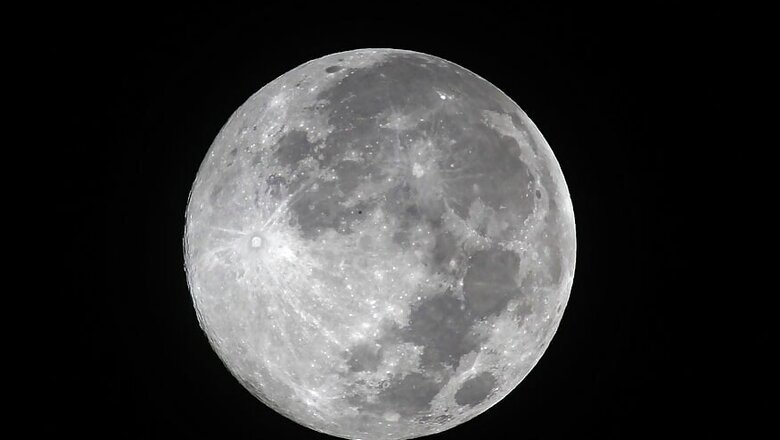
views
Washington: NASA scientists have found new insights into how the Moon got its mysterious "tattoos" - swirling patterns of light and dark found at over a hundred locations across the lunar surface.
"These patterns, called 'lunar swirls,' appear almost painted on the surface of the Moon," said John Keller of NASA's Goddard Space Flight Centre in US. "They are unique; we've only seen these features on the Moon, and their origin has remained a mystery since their discovery," Keller said.
Lunar swirls can be tens of miles across and appear in groups or just as an isolated feature.
Previous found that they appear where ancient bits of magnetic field are embedded in the lunar crust and the bright areas in the swirls appear to be less weathered than their surroundings.
Many things can cause material exposed to space to change chemically and darken over time, including impacts from microscopic meteorites and the effects of the solar wind a million-mile-per-hour stream of electrically conducting gas blown from the surface of the Sun.
The swirls and the magnetic fields could both have formed from plumes of material ejected by comet impacts.
Alternatively, perhaps when fine dust particles get lofted by micrometeorite impacts, an existing magnetic field over the swirls sorts them according to their susceptibility to magnetism, forming light and dark patterns with different compositions.
Since particles in the solar wind are electrically charged, they respond to magnetic forces. Perhaps the magnetic field shields the surface from weathering by the solar wind.
In the new research, scientists created computer models that provide new insights into how the magnetic shield hypothesis could work.
"The problem with the magnetic shield idea is that the embedded magnetic fields on the Moon are very weak about 300 times weaker than Earth's magnetic field," said Bill Farrell of NASA Goddard.
"It's hard to see how they would have the strength to deflect the solar wind ions," Farrell said.
The new models show that the magnetic field can create a strong electric field when the solar wind attempts to flow through. It is this brawny electric potential of many hundreds of Volts that could deflect and slow particles in the solar wind.
This would reduce the weathering from the solar wind, leaving brighter regions over protected areas.
New observations from Lunar Reconnaissance Orbiter (LRO) mission, provide support for the magnetic shield hypothesis, but do not rule out the other ideas.




















Comments
0 comment